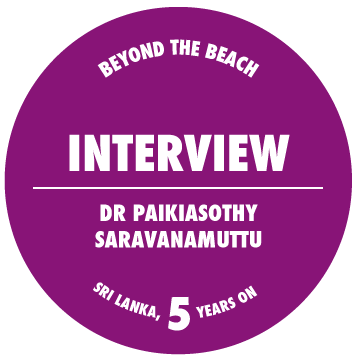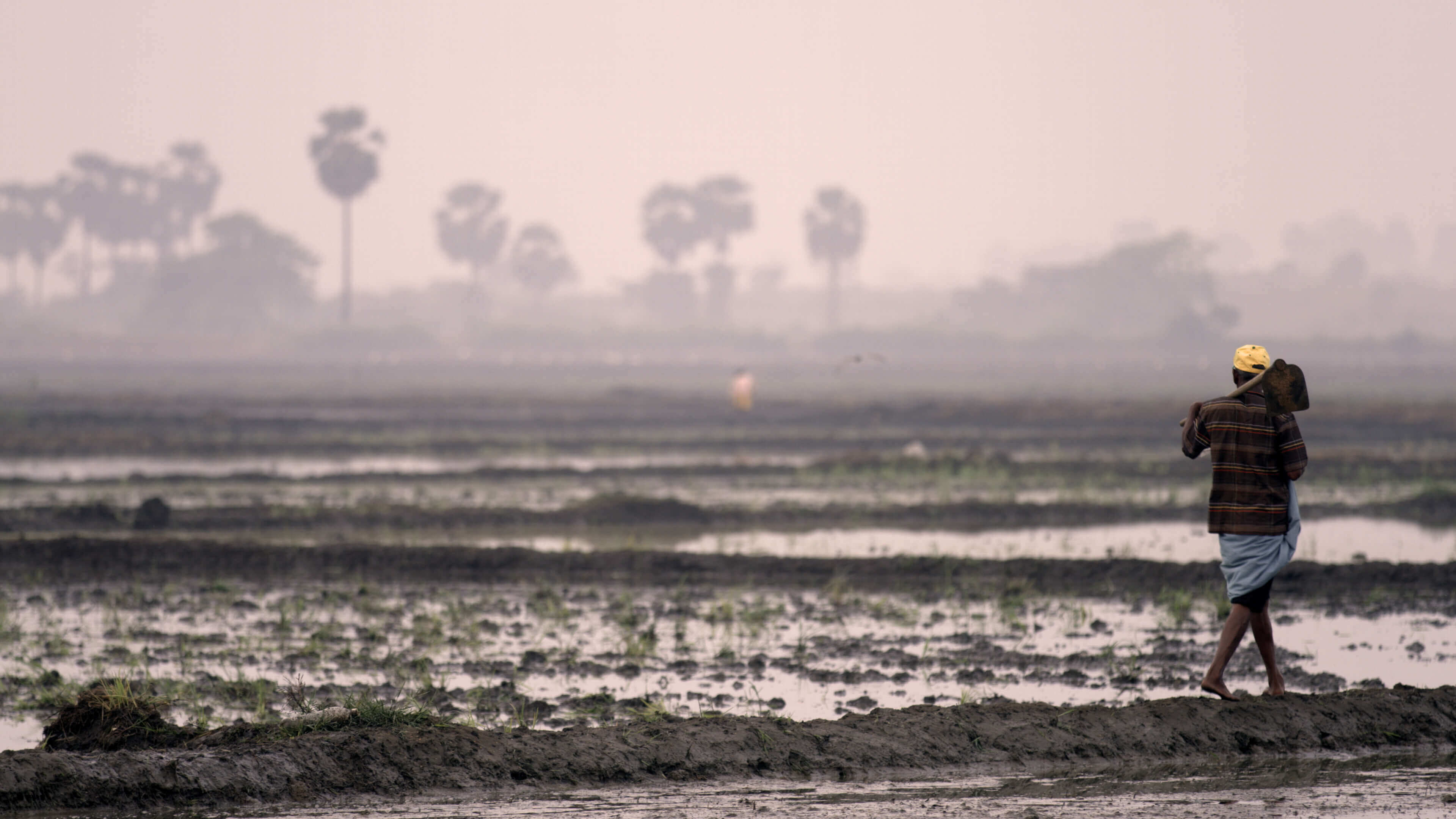
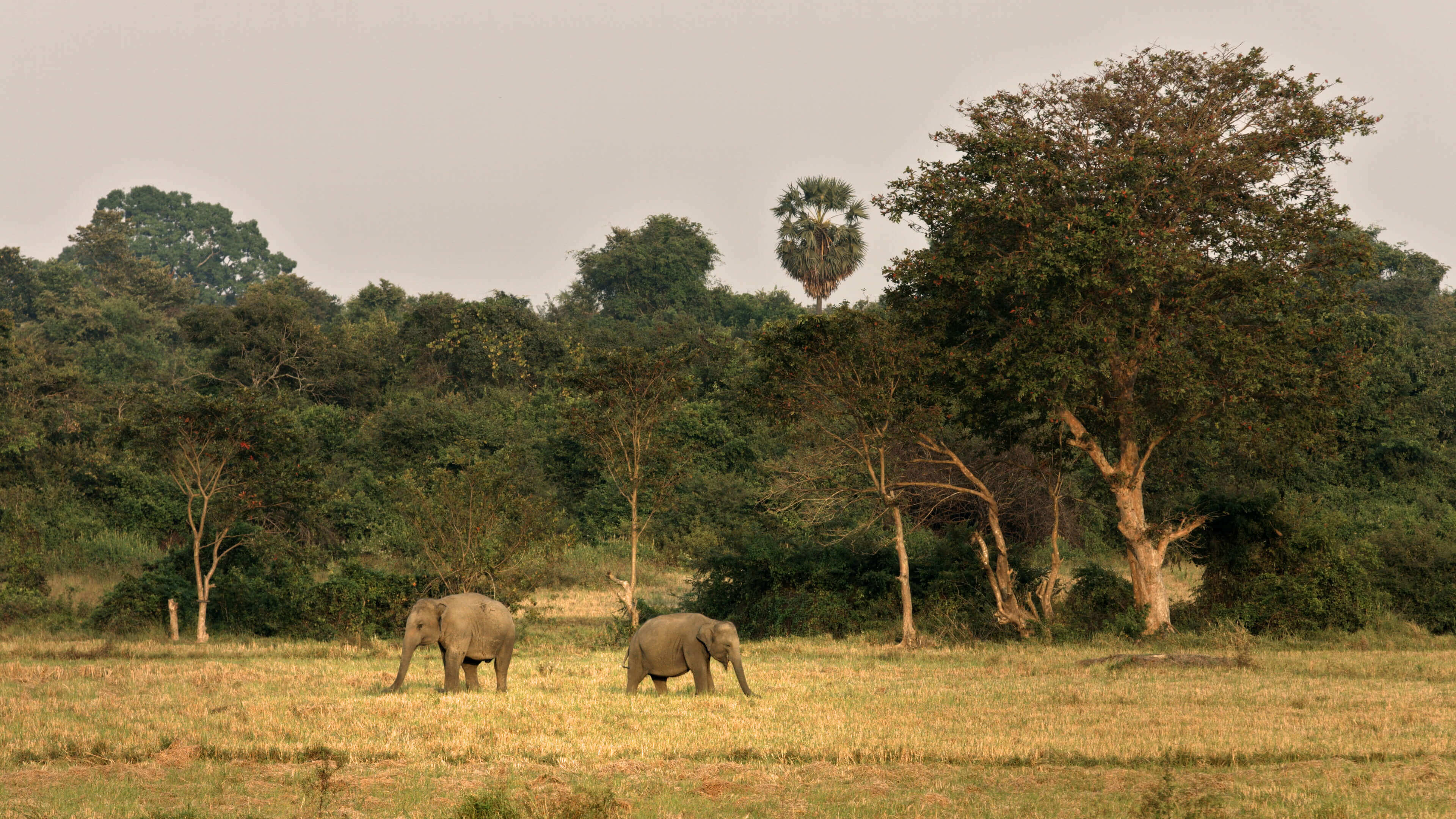
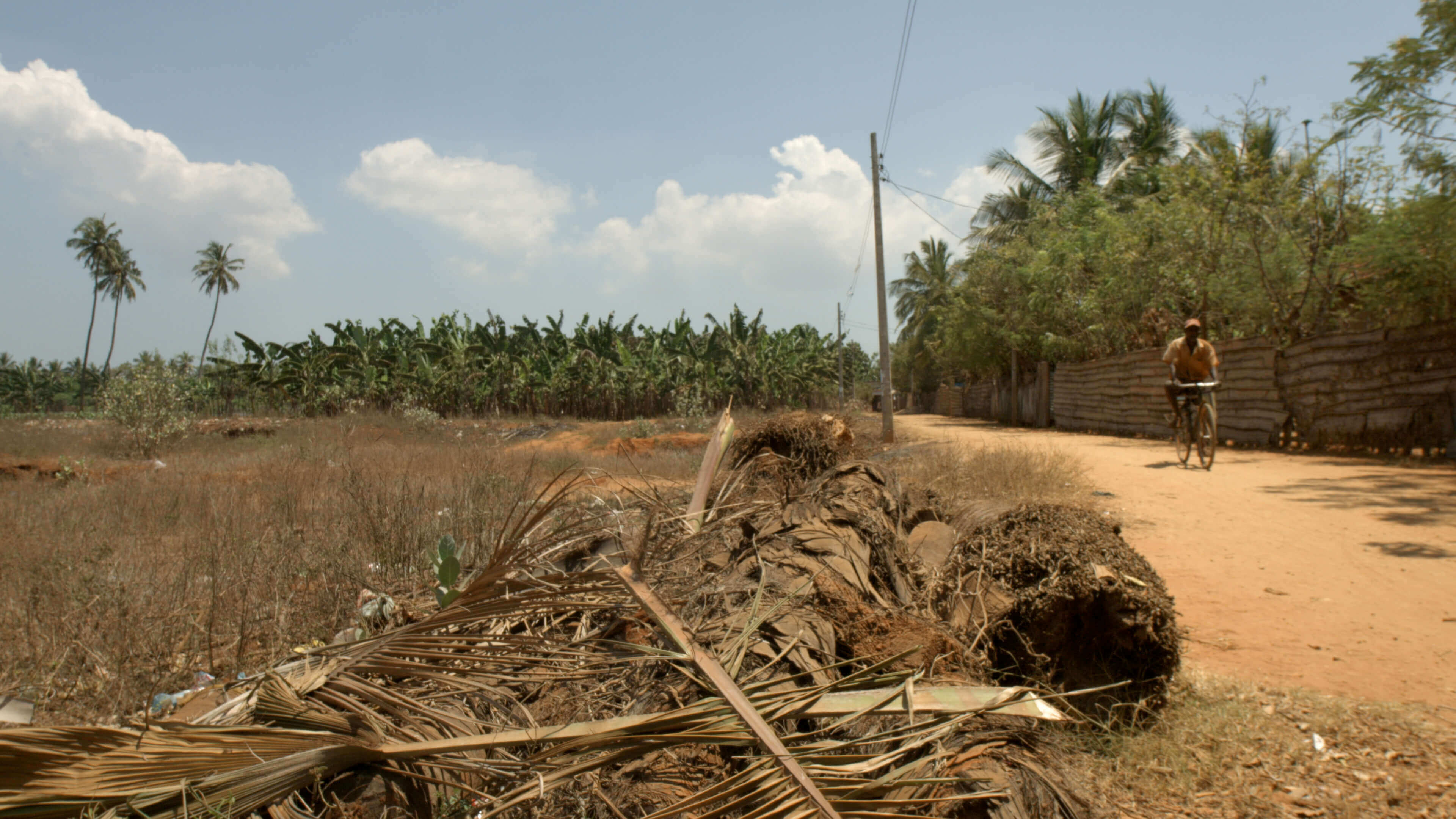
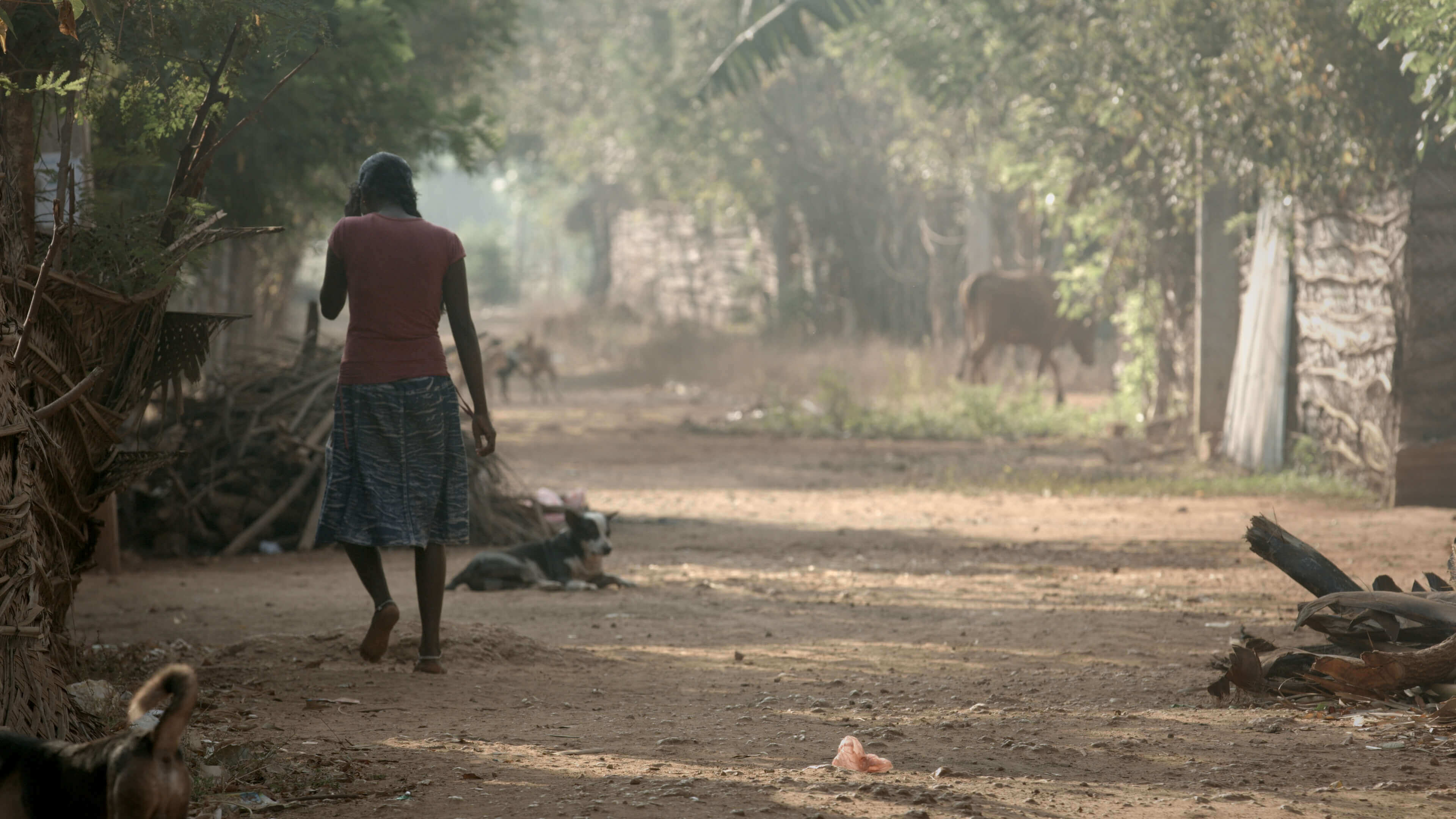
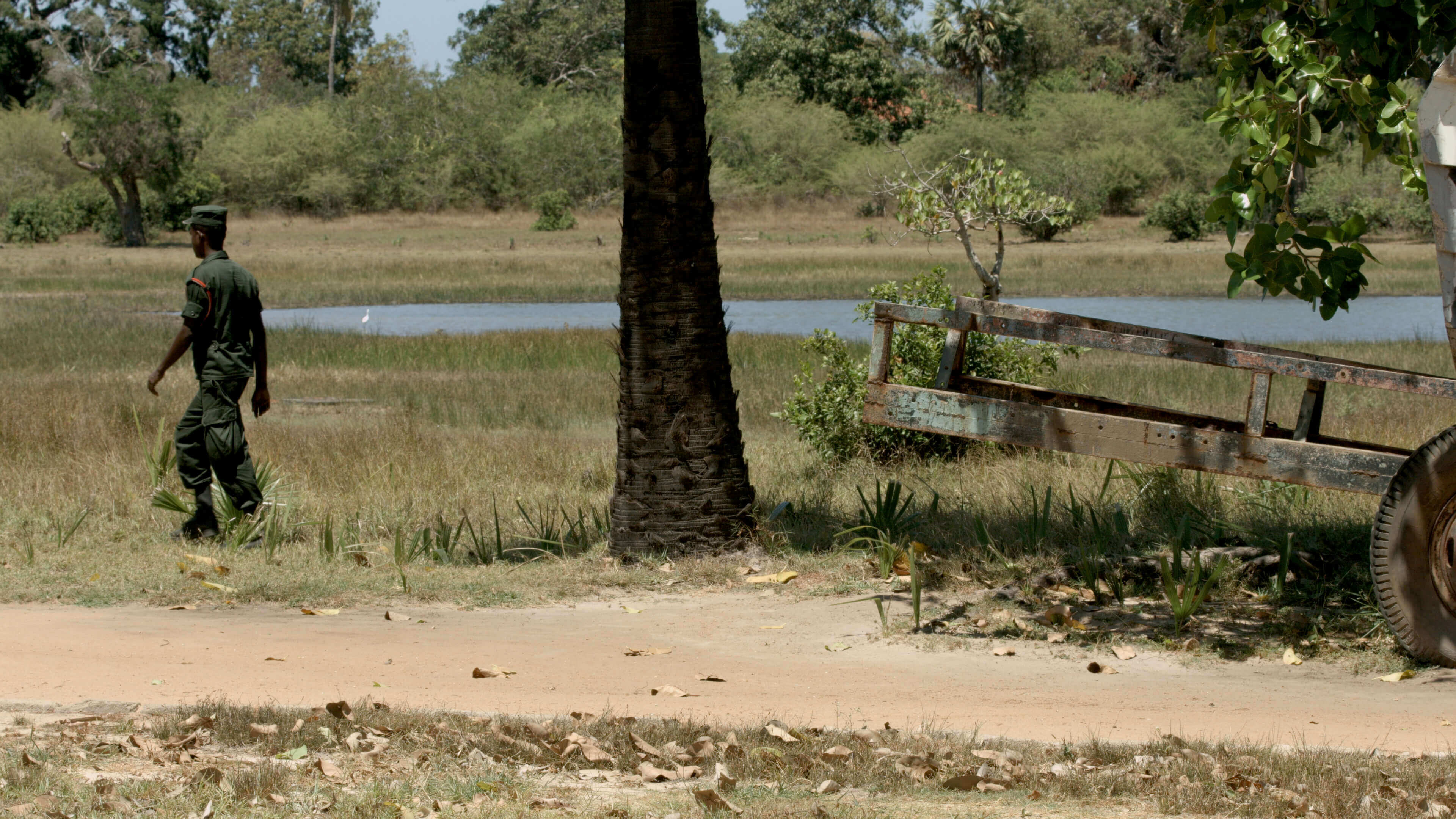
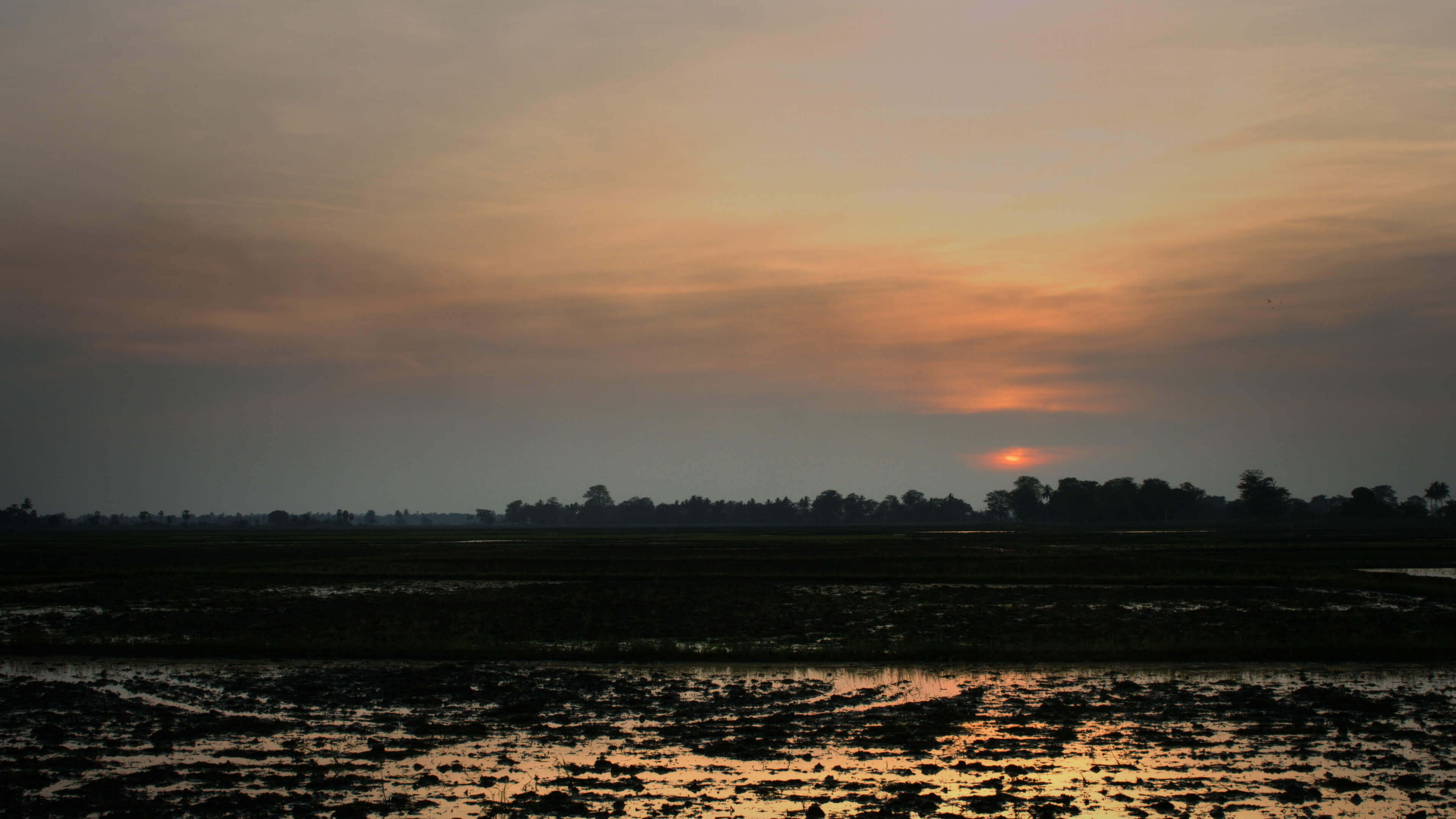
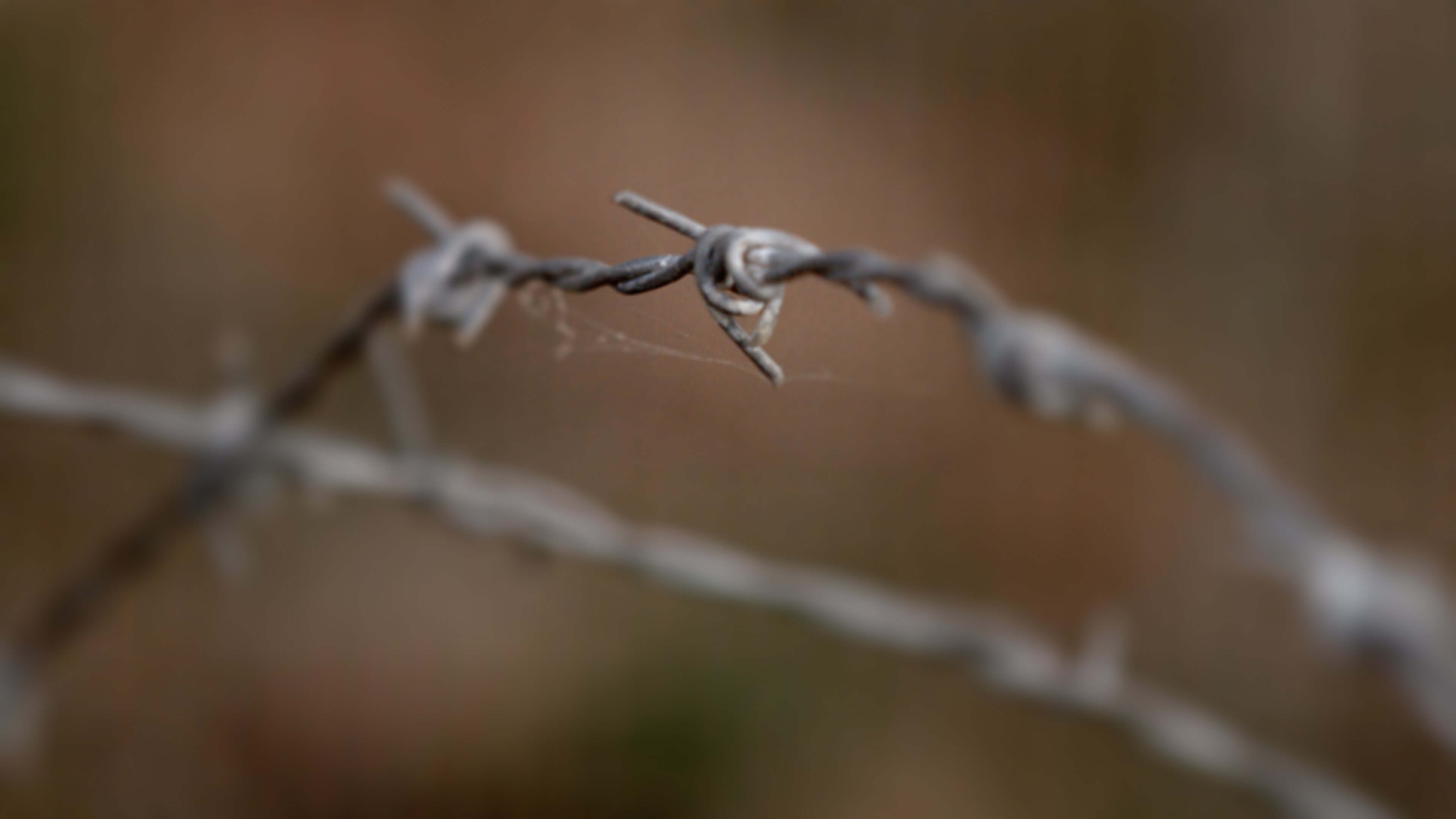
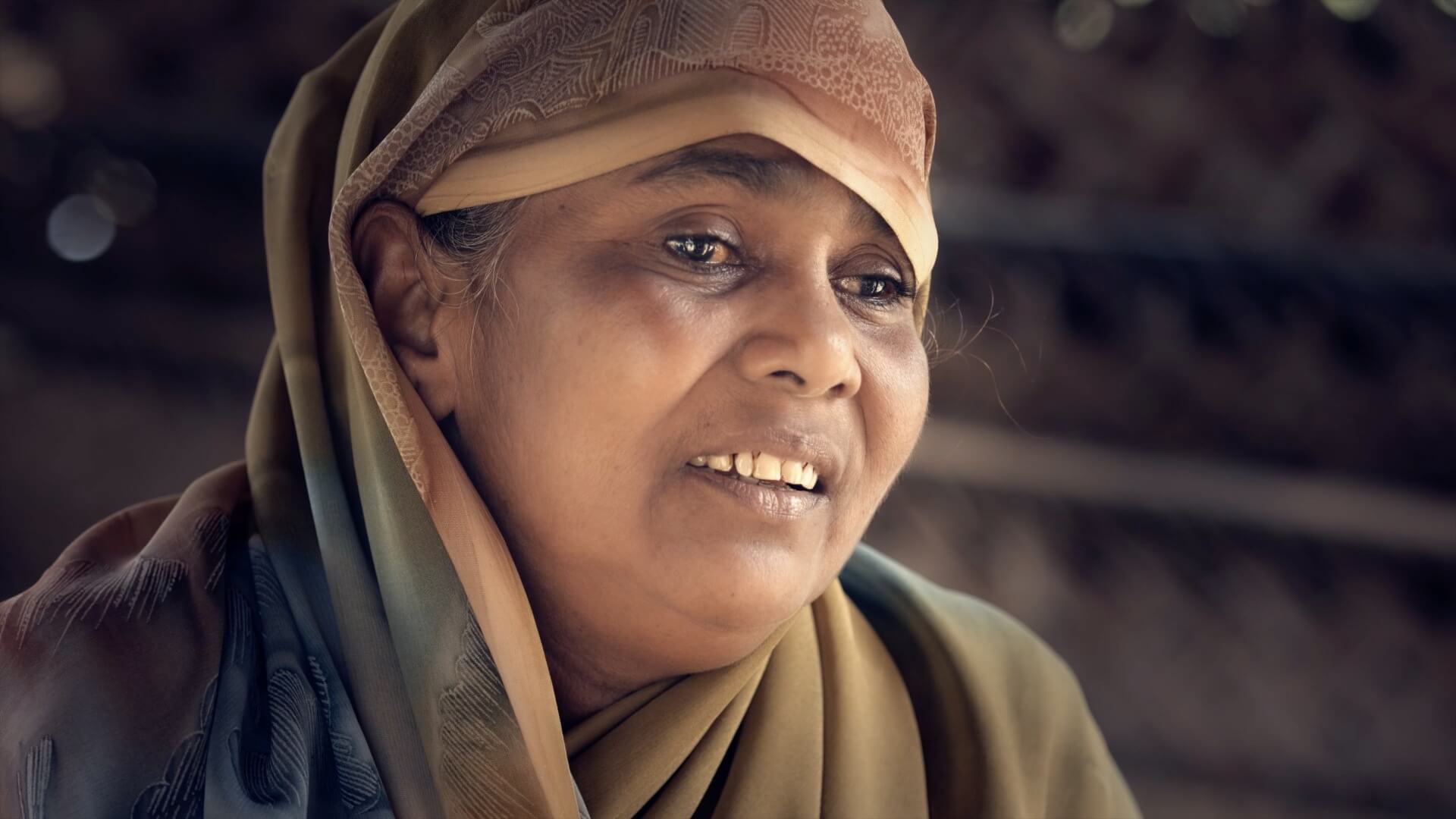
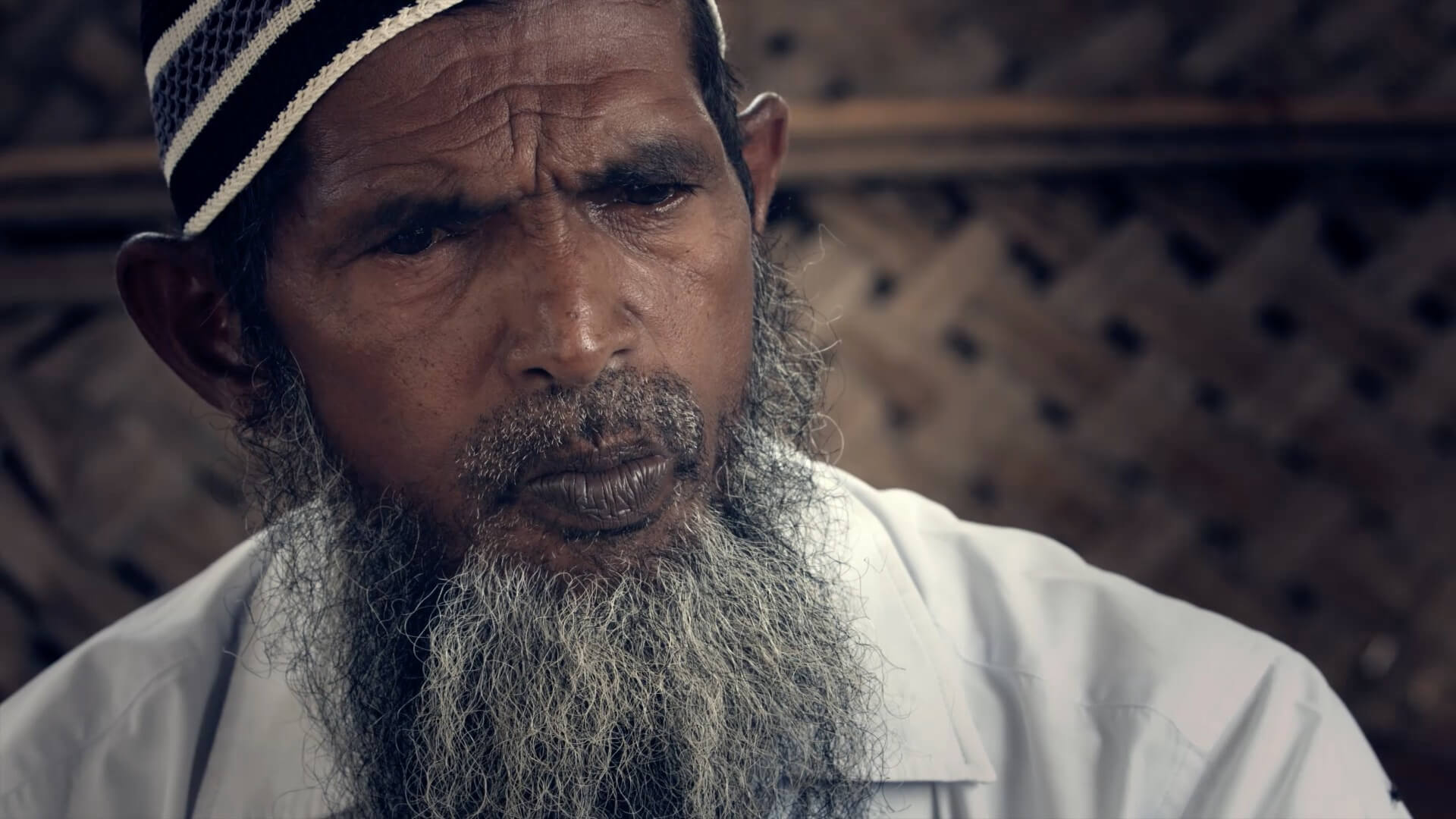
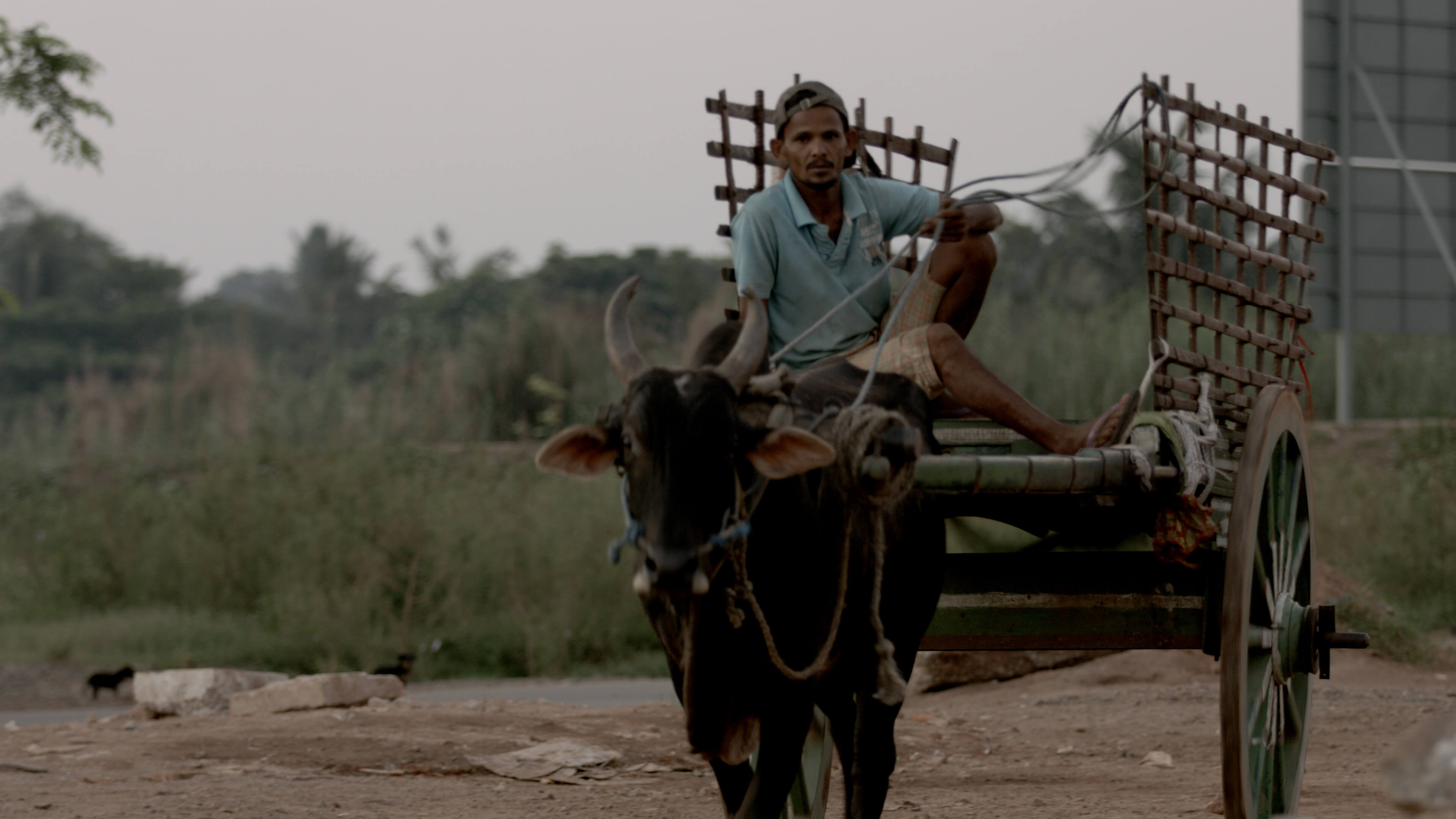
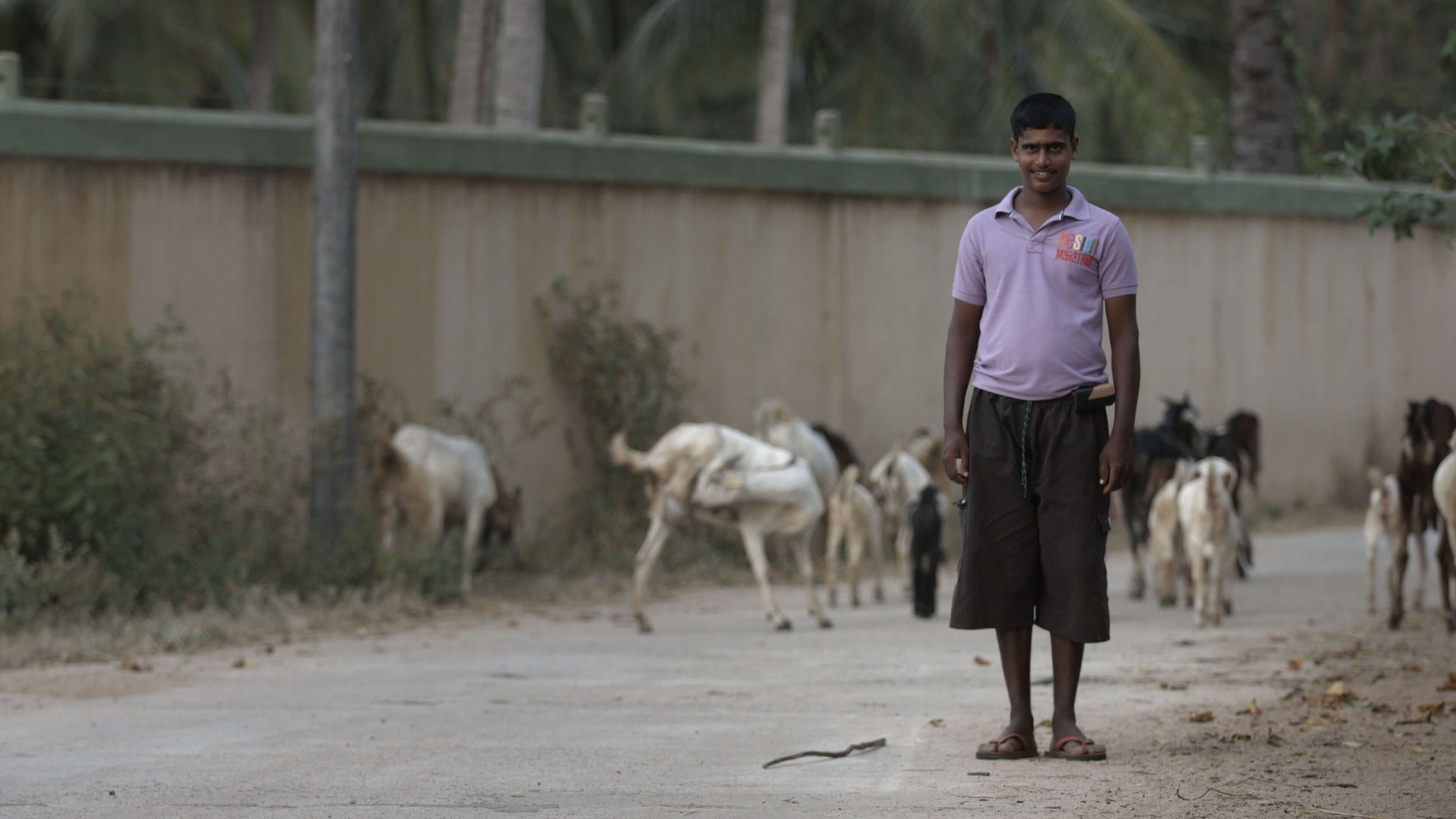
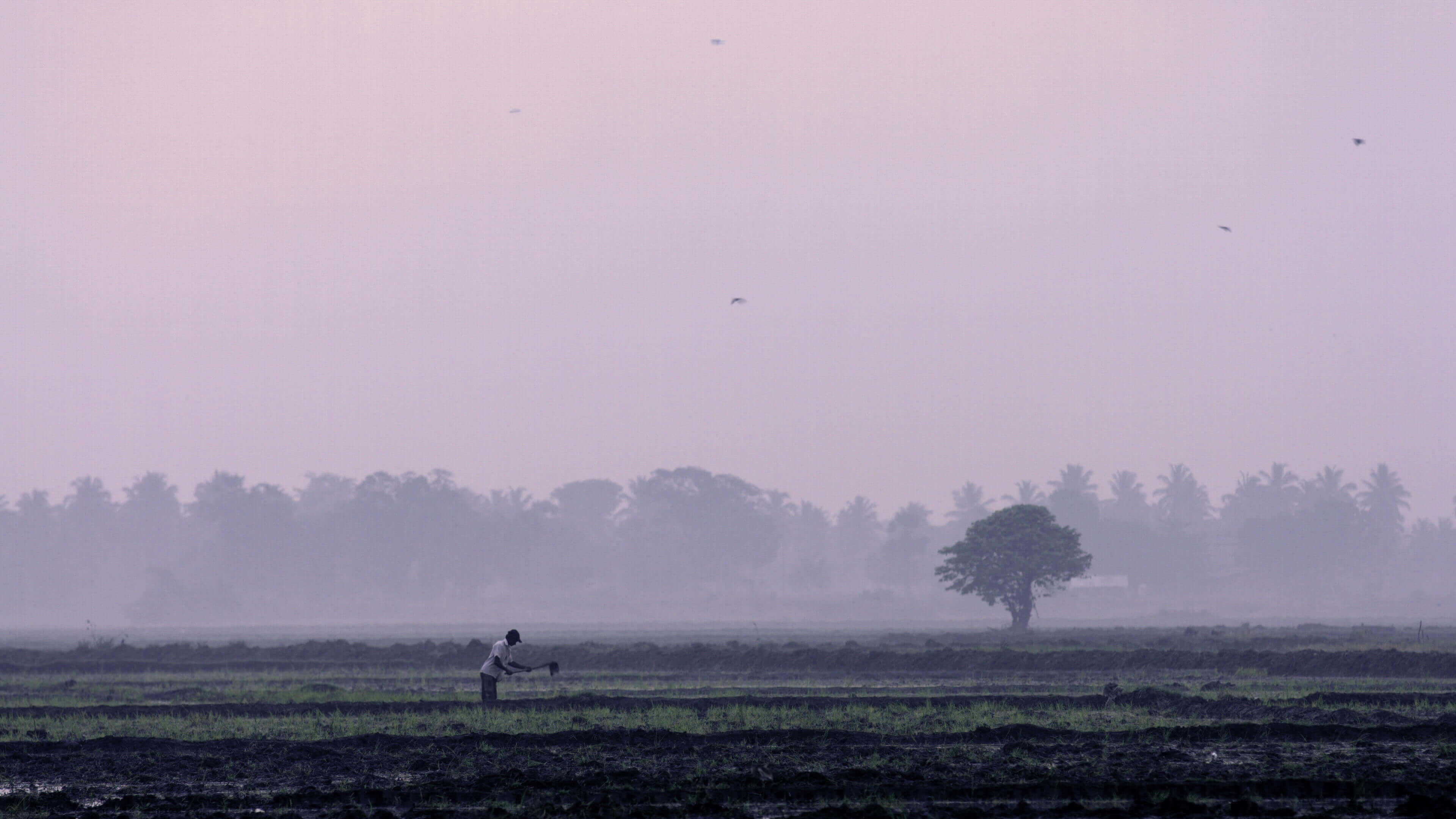
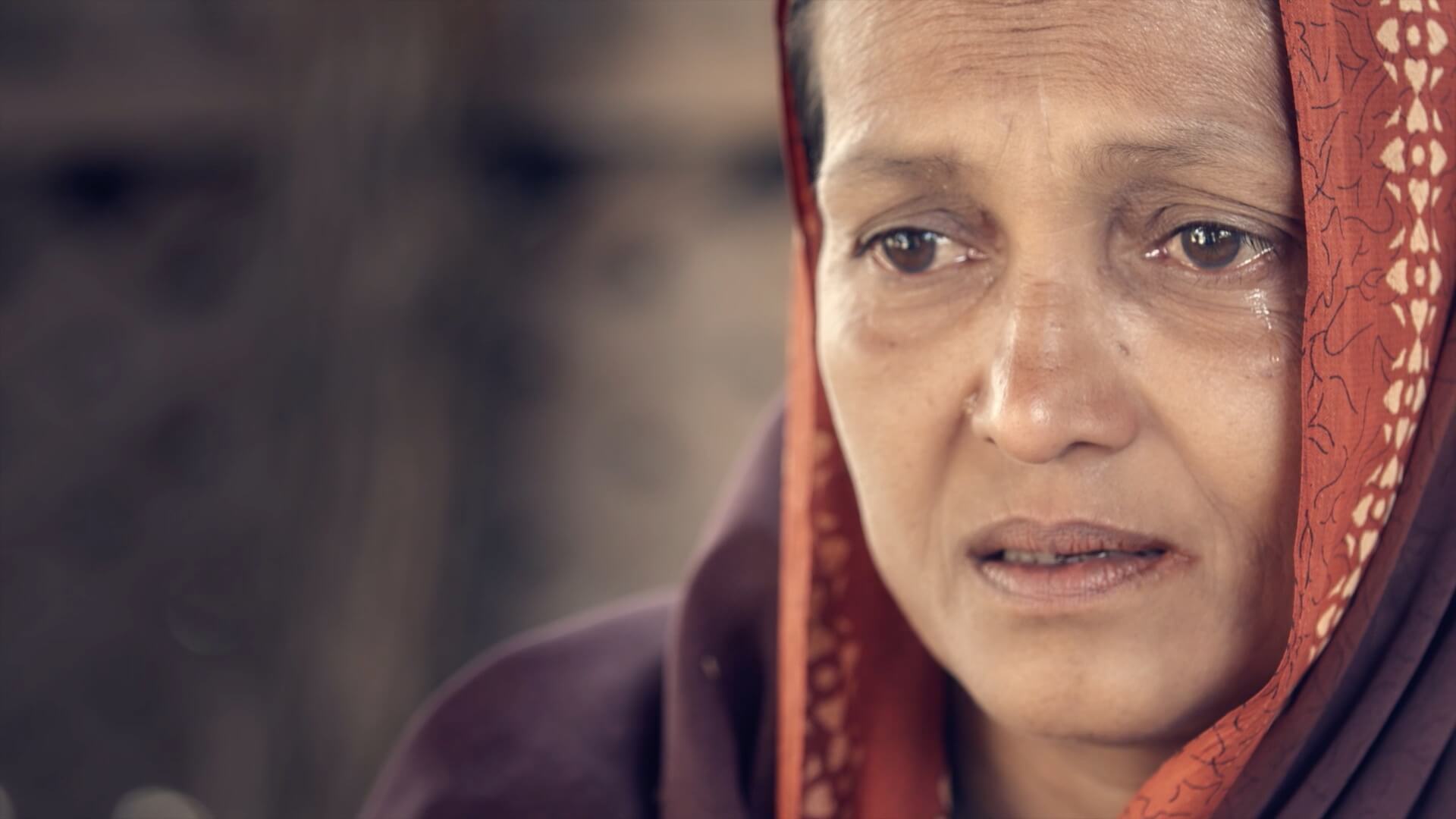
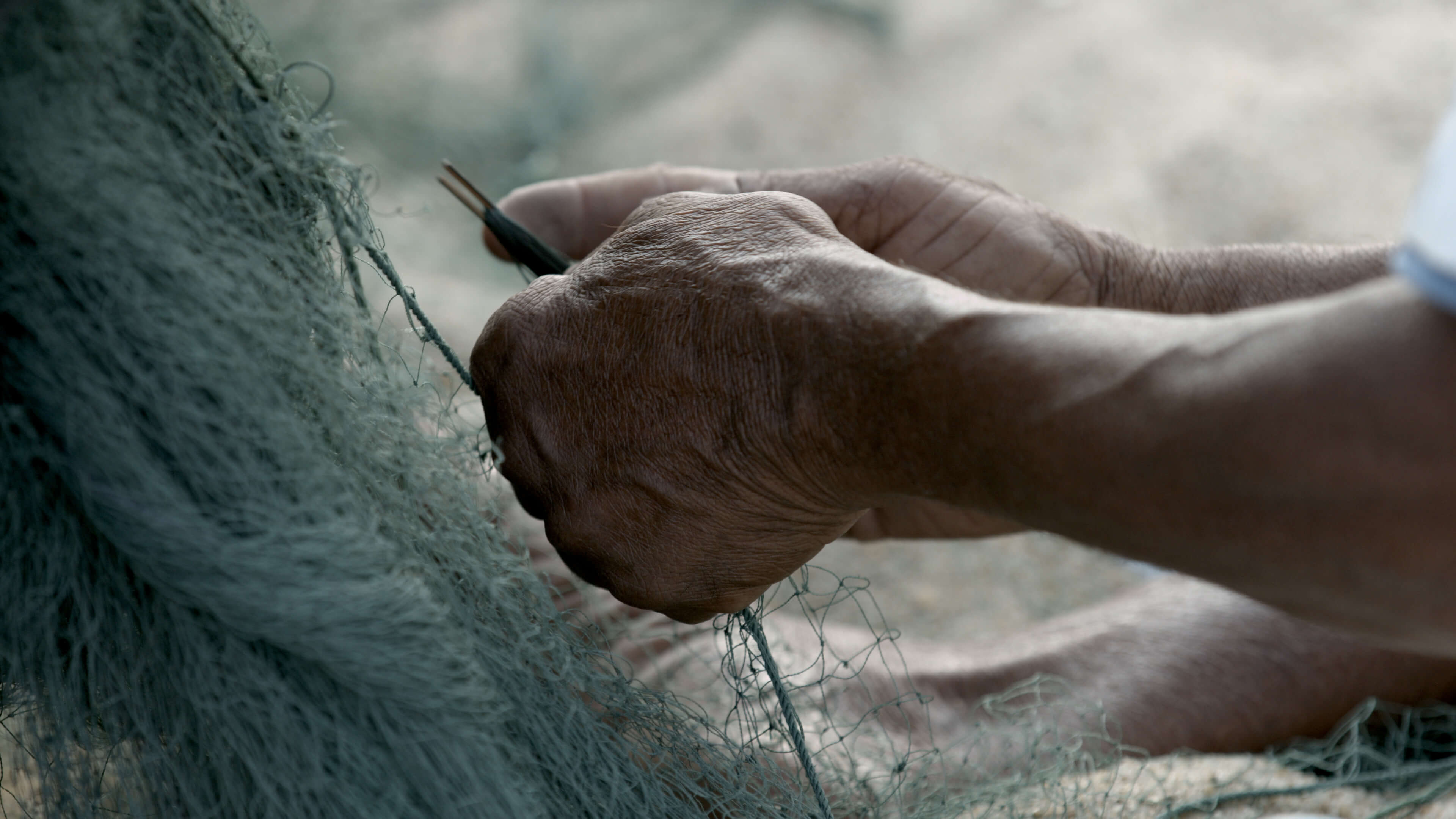
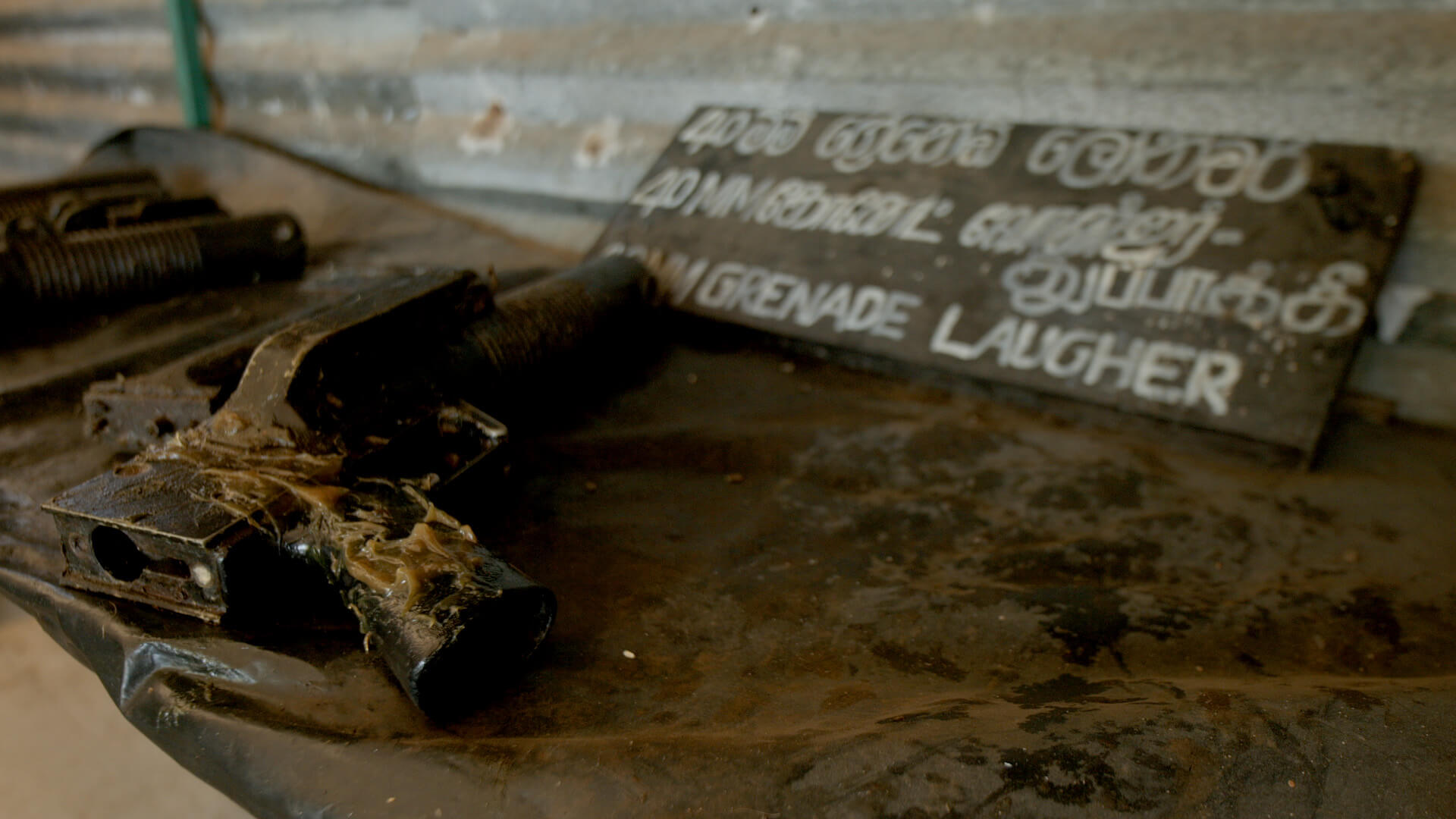


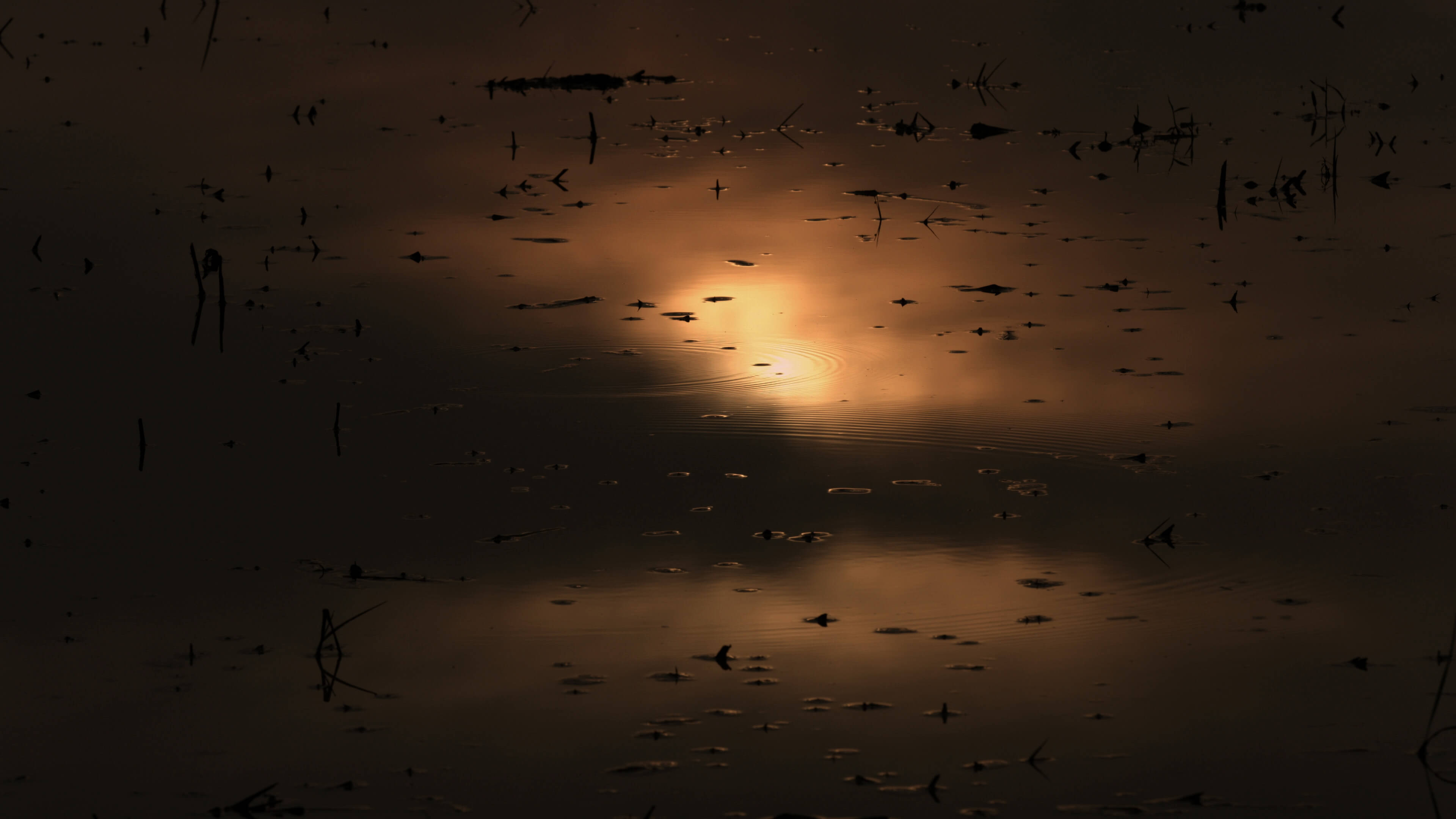
BEYOND
THE BEACH
HOVER TO
NAVIGATE


Katheeja Umma was hunched over a knee-high rice paddy, planting the season’s second crop when the Sri Lankan army marched in.
The commanding officer said they would only stay for a little while and they only needed eight acres of land. For security purposes, they said.
“And then they told us, ‘None of you can farm here. You must all leave,’” Katheeja recounted.
CAME ON A SATURDAY AFTERNOON.

Since the 1950s, the Tamil-speaking Muslim farmers of Ashraf Nagar village have carved gardens out of the jungle where wild elephants sometimes wander. Flat, geometric-patterned fields stretch out behind a beach once ravaged by a tsunami. The fertile soil serves up rice, tonnes of it, along with maize, manioc, peanuts, chili peppers, onions and green gram.
“We had all our own land,” Katheeja remembers. “We had enough food and we were happy.”
In November 2011, two and a half years after the end of Sri Lanka’s civil war, the army set up a military camp in Ashraf Nagar. They ordered everyone out of their homes, bulldozed their crops and put up a barbed-wire fence.
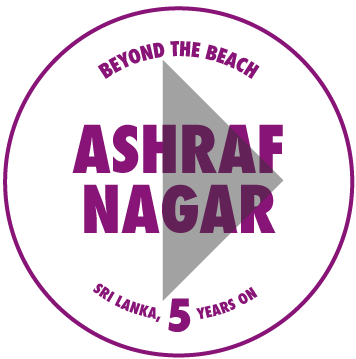
CLICK TO PLAY
VIDEO

seized more than 45,000 acres of land, according to rights groups. Some of it is public land where families have lived for years on state-issued permits, as in Ashraf Nagar. Some is private land, where deed-holding residents are evicted, often without compensation or alternative housing.
Sri Lankan military spokesperson Brigadier Ruwan Wanigasooriya says the military has always followed the legal procedure for acquiring land.
“Such acquisitions are carried out only when it is essential to ensure national security interests of the country are protected,” he wrote in an email to Al Jazeera.
AND AFTER THE WAR, THE SRI LANKAN MILITARY

Others see something more subversive happening. Tamils in the north and east have long suspected that the government is using the military to move Sinhalese people into Tamil-dominated areas, a process they call “Sinhalisation”. With more Sinhalese voters in those areas, they say, the ruling family can avoid having to relinquish power to minorities.
“The government’s agenda is to change the demography so that even in those areas the Tamils are not a majority,” said MA Sumanthiran, a member of parliament from the Tamil National Alliance party. “It is to ensure that the political demands of the Tamil people are crushed forever.”
Land is a complex and emotional issue in Sri Lanka, wielded as a political tool by nearly every power player. For the people affected on the ground, loss of land can be devastating, bringing destitution and deep trauma.
“Traditionally, the ownership of land has given one status in society, as well as security,” says Paikiasothy Saravanamuttu, of the Centre for Policy Alternatives. “The taking over of land by the military is in a sense showing who is in command, who is in authority.”
Nowhere is that more evident than in Ashraf Nagar, where a few civilians live side-by-side with soldiers in an army camp.

were driven out when the army set up camp in 2011. No longer able to earn a living from farming, they went in search of work as day labourers.
But Katheeja Umma refused to leave.
“From the time I was a child I lived with my parents on that land,” 56-year-old Katheeja said. “My wedding took place on that land.”
Now her life is circumscribed by barbed wire and young recruits who seem to make a hobby out of tormenting her and the three families who remained in Ashraf Nagar.
OF THE 69 FAMILIES WHO LIVED IN ASHRAF NAGAR

They defecate around her house and lay broken glass on the sandy path leading to it, she said.
Katheeja says they won’t allow her to repair her termite-infested thatched roof. When it rains, as often happens at night during monsoon season, the bedroom is flooded.
“We have to stand holding the sleeping children waiting for dawn and for the rain to stop,” she said.
Without plumbing, the residents of Ashraf Nagar have always used the surrounding jungle as a toilet facility. Now, that involves leaving the camp to go beyond the watchful eyes of the soldiers.
A man with a gun stands in the way. “Where are you going? What are you doing?” he asks.
“Imagine what it would feel like for a girl who wants to go to the toilet in a hurry to be stopped and questioned like this,” said Katheeja’s neighbour, Athambay Mohamed Misba. “Our children come and tell us what has happened to them and say they want to die rather than face this.”
the allegations of harassment detailed by Katheeja and her neighbours.
“These allegations have not been reported to the army. If they do report we can investigate. Moreover, they are free to make complaints at the police station that is in the area. The army will support any investigation by the police if there is any,” he wrote in an email to Al Jazeera.
Katheeja and her neighbour Adambawa Ibralebbe took their case to the Supreme Court of Sri Lanka in April 2012. The case claims their rights to equality, freedom of movement and an adequate standard of living have been violated by army officials.
SPOKESMAN BRIGADIER RUWAN WANIGASOORIYA DENIED

Brigadier Wanigasooriya declined to comment on the Supreme Court case, but when asked why they chose this particular location, he said, “We need army deployment in this area for national security.”
“In my opinion, the army setting up a camp there was quite uncalled for,” Rauff Hakeem, Sri Lanka’s Minister of Justice, said in an interview. “Invariably that should be a matter for the police to maintain law and order and to see that such disputes are settled. They could have set up a police post, and you need not bring in an army camp or army contingent to be placed in a civilian-occupied area.”
While the court is deciding whether to accept the case, the attorney general has offered alternative land to Ashraf Nagar residents with valid land permits. They rejected the first offer, saying the land lacked water for irrigation. Attorneys are negotiating for a more viable parcel of land.
Meanwhile, Katheeja and another neighbour, Lathefa Umma, have also taken their complaints to the Human Rights Commission of Sri Lanka. A March 2014 testimony to the commission alleges: “Continuous torture and harassment by the army officers” and details a recent encounter with the army commander.

was summoned to meet with the army officer-in-charge at the camp. The feisty grandmother went reluctantly.
The officer again ordered her to leave her home. She again refused. She has a right to stay as long as the Supreme Court case is pending, she told him – adding that she has nowhere else to go.
There would be consequences, the officer warned: The army would impose a 6pm to 6am curfew.
Lathefa protested. They needed to leave the camp to pray in the mosque in the evenings and before dawn. And surely they must be allowed to leave their huts to use the toilet.
“He warned us that hereafter, if we venture into nearby areas for nature call or anything else they can’t guarantee our security and it is going to be dangerous,” Lathefa testified to the Human Rights Commission of Sri Lanka. “They can kill me at any time and claim they did not do it,” she later told Al Jazeera.
TUESDAY MORNING IN MARCH, LATHEFA

She defies the curfew anyway. Every time she passes through the camp’s checkpoint, Lathefa picks up two handfuls of stones and challenges the machine-gun-equipped soldiers to try to stop her.
“The terrorist is you,” she taunts them. “If you are the security force that rid us of terrorism then you have to be a security force with a mandate to protect us.”
Lathefa is no longer afraid of them, but her 15-year-old daughter is. Lathefa says the soldiers haven’t touched her daughter, but they spew crude comments and cat calls when she walks to school.

the Sri Lankan military moved into Tamil-dominated areas in the north and east to assert state authority over former Tigers territory, and a new kind of military emerged.
They shifted from a wartime fighting force to a peacetime development corps, clearing a million landmines, rebuilding destroyed infrastructure and resettling displaced communities.
“The military played a very important role in the post-conflict stage in restoring normalcy, as well as restoring some of the other services into that area,” said Ajith Nivard Cabraal, Governor of the Central Bank of Sri Lanka. “There were many private sector people who would not even want to go there because they had no facilities to set up their own operations, even to construct a road. That was also done by the military.”
THE DEFEAT OF THE LTTE IN 2009,

It’s unclear how many troops are still deployed five years after the end of the war. Figures are not publicly available and officials have cited drastically different numbers. International Crisis Group estimates about 120,000 army troops remain in the region, plus tens of thousands of navy, air force, special task force and civil defence force personnel. With a population of just over a million in Sri Lanka’s Northern Province, the civilian to military personnel ratio is estimated to be 5:1, one of the highest in the world.
Regardless of the numbers, one thing is apparent to anyone travelling through the former war zone of the Northern Province: Military bases are ubiquitous.
After passing through the Omanthai checkpoint that marks the boundary between the Sinhalese south and the Tamil north, the transition is abrupt. On the right of the newly rebuilt A9 highway, a four-metre barbed wire fence seems to go on forever before reaching the medieval-looking grey stone arched gate of the Sri Lankan Security Forces Headquarters - Wanni.
Opposite the gate’s giant bronze statue of a lion baring his teeth, a gleaming supermarket owned and run by the army serves as a rest stop for road-weary travellers and a canteen for off-duty soldiers.
This scene repeats across the war-affected region, as training camps, bases, barracks, recreational facilities, farms, watch posts, checkpoints and military-run businesses dot the landscape.
Critics say the military has gone beyond its mandate, encroaching on matters better handled by a civilian government, and warn of a creeping militarisation that threatens peace and reconciliation.



